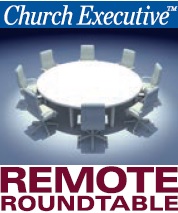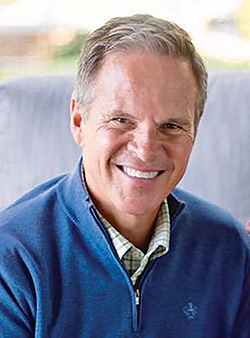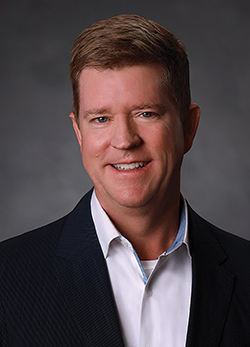
 Tips, tools & expert advice
Tips, tools & expert advice
Given the coronavirus and its effect on church operations, are you seeing an increased interest in sustained giving tools and strategies?

Lead Pastor @ Stevens Creek Church
Founder @ SecureGive
securegive.com
Baker: Before COVID-19, digital giving was an important part of a church’s stewardship ministries. Now it’s the main focus of financing the work of the Lord. Every church has been affected, and every pastor feels its weight. We simply must provide a simple, secure way for people to give.
The foundation of digital stewardship is an online giving option on your website. This requires a website or a social media page and a software provider, like SecureGive, to provide current, secure technology that connects your donors with your mission.
Once the giving site is working, encourage members to set up an account and give as the Lord prompts them.
SecureGive understands the needs of local churches and allows members to donate to multiple categories in one transaction.
One of the features that helps in times of crisis is the ability to set up a recurring donation. In life, we automate what’s important. We do that with our mortgage payments, our insurance payments and so forth. Why not automate your gifts to the church so that your congregation can stay financially strong regardless of the season?
We have also created very rich resources that give practical strategies and best practices to churches as they make decisions surrounding COVID-19.

Sr. Director, Industry Verticals
Nacha
nacha.org
Smith: Nacha has continuously promoted the benefits of ACH (some refer to it as EFT) for sustained giving to churches and other nonprofit organizations. I think that this crisis has made all nonprofits more aware of the value of ACH to assist in keeping donations at previously expected levels. Aside from ACH payments being safe and secure, ACH provides uninterrupted tithing during times when people can’t attend church services in person. And while the current pandemic has temporarily shuttered many churches, there will always be other reasons for nonattendance, such as vacation or illness.
Surely, church leaders are concerned right now with how quickly giving tools can be implemented. Should they be?
Smith: How quickly a congregation can implement ACH depends upon the financial institution or financial service provider that they work with for this option. Most financial institutions have a simple and timely implementation process that they use to set up the service, and then the congregation can start to have members sign up to participate. Nacha has developed a nonprofit toolkit that can provide the authorization forms, frequently asked questions, and other implementation materials that will help to make the process even easier and more efficient.
Baker: SecureGive can equip a church with our tools in two business days.
For churches that already have our giving platform, but need to add giving options, they can receive these added tools the same day.
At the moment, what are church leaders’ other common questions about driving sustained giving?
Baker: The most common concern we’ve seen among churches during the pandemic is that they’re not sure how to address giving in a time when people’s income is uncertain. We’ve been encouraging pastors to remain confident and trust that their congregations still want to give to the Lord and support the church’s vision. At SecureGive, we have actually seen an increase in giving participation rather than decline.
Smith: Discussions that we have are usually centered around the cost of ACH compared to other methods of payment. Typically, ACH is less expensive than card and check payments. ACH is also much faster and easier than check payments since there’s no need to go the bank to deposit checks or cash. Due to the current pandemic, we’ve heard a lot about how cash can carry viruses and bacteria, making it unappealing to those having to handle the cash.
We’ve also determined that those who donate by ACH are sustaining donors for a greater length of time than those who use other payment types.
“[A] consistent message of faith, hope and giving will be meaningful to parishioners. Spreading the word that making donations by ACH can help the church in this difficult time to continue to perform its mission will most likely be met with enthusiasm.”
— Brad Smith, AAP
At a time like this, it can be challenging for a church leader to spread the word about a new giving option. What strategies can you offer?
Smith: Any communication from a church leader that provides comfort and assurance to churchgoers during an event like this will be welcome.
I also think that a consistent message of faith, hope and giving will be meaningful to parishioners. Spreading the word that making donations by ACH can help the church in this difficult time to continue to perform its mission will most likely be met with enthusiasm.
Another message that we have found is helpful is that since ACH is less expensive to process than other payment types, more of the congregation’s donations go to the church or cause.
Baker: Communicate the need. It takes money to do ministry. Use email, social media and videos to communicate the mission of your church.
Be bold and ask people to give. This isn’t the time to be fearful of positioning generosity to your churches. Be intentional and get the word out.
Make it easy. We tell our church clients all the time: don’t make SecureGive difficult to find. When a churchgoer visits your website, the last thing they should have to hunt for is how to give. Put your giving button in a very visible place, and drive people to it in different places throughout your website.
“In life, we automate what’s important. We do that with our mortgage payments, our insurance payments and so forth. Why not automate your gifts to the church so that your congregation can stay financially strong regardless of the season?”
— Dr. Marty Baker
Are there ways for church leaders to identify the members who are most likely to embrace a sustained giving option?
Baker: This question was key to us as we set out to make SecureGive a comprehensive digital giving solution. How can we create a platform that meets every need for every type of person? Online/mobile giving is the most widely used tool, but we also have things like text giving, which is great for someone who can’t commit to a recurring gift or perhaps has a very static income.
Then, there are kiosks, which have proven to be the most widely used first-time-giver tool. People are familiar with swiping a card. Why not give them that same opportunity in your church building?

Smith: Everyone is familiar with ACH, even if they don’t know the term. Most people are paid by Direct Deposit, which goes through the ACH Network. For older members of the congregation, most Social Security payments also are made via Direct Deposit using ACH.
We haven’t found any specific demographics that embrace ACH more than others. The two primary components are a willingness to donate and a checking account — it’s really that simple. Sometimes it’s easier for a donor to pull out a card to donate; but when using ACH, more of the donation goes to the cause, and donors tend to give longer when using ACH.
What are givers’ concerns about signing up for a sustained giving program — and what’s the reality?
Smith: Many people are hesitant to give their checking account information to an organization, especially one that they’re not familiar with; we understand that. However, most people have bill payments coming directly out of their checking accounts for various bills like mortgage, rent, car and utility payments.
In addition, if the giver is a member of your church, there should be a level of comfort that their account information won’t be used for illicit purposes. ACH is a safe and secure method of payment and has been for more than 40 years.
Baker: In today’s world, people are more comfortable than they ever have been to give digitally. Let’s face it: technology drives almost everything we engage with. I don’t think people are all that concerned with enrolling to give that way, as much as they are with the “how.” What I mean by that is, SecureGive can only take you so far. At some point, the church must commit to taking our suggestions/strategies and implementing them.
Church leaders simply must make sure their members know about tools like SecureGive. The technology is stellar, but you’re responsible for how to use it. We all are.
— Reporting by RaeAnn Slaybaugh


